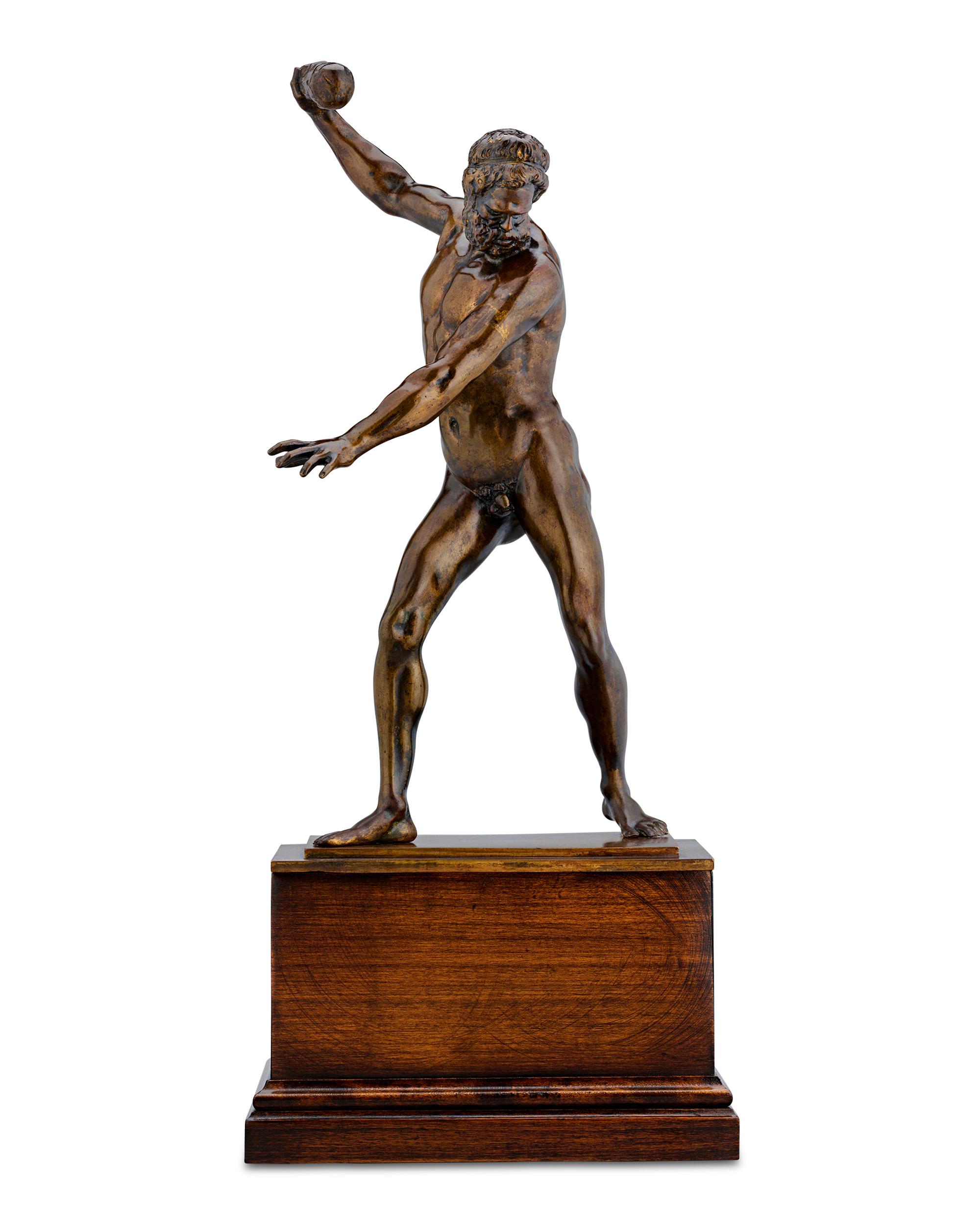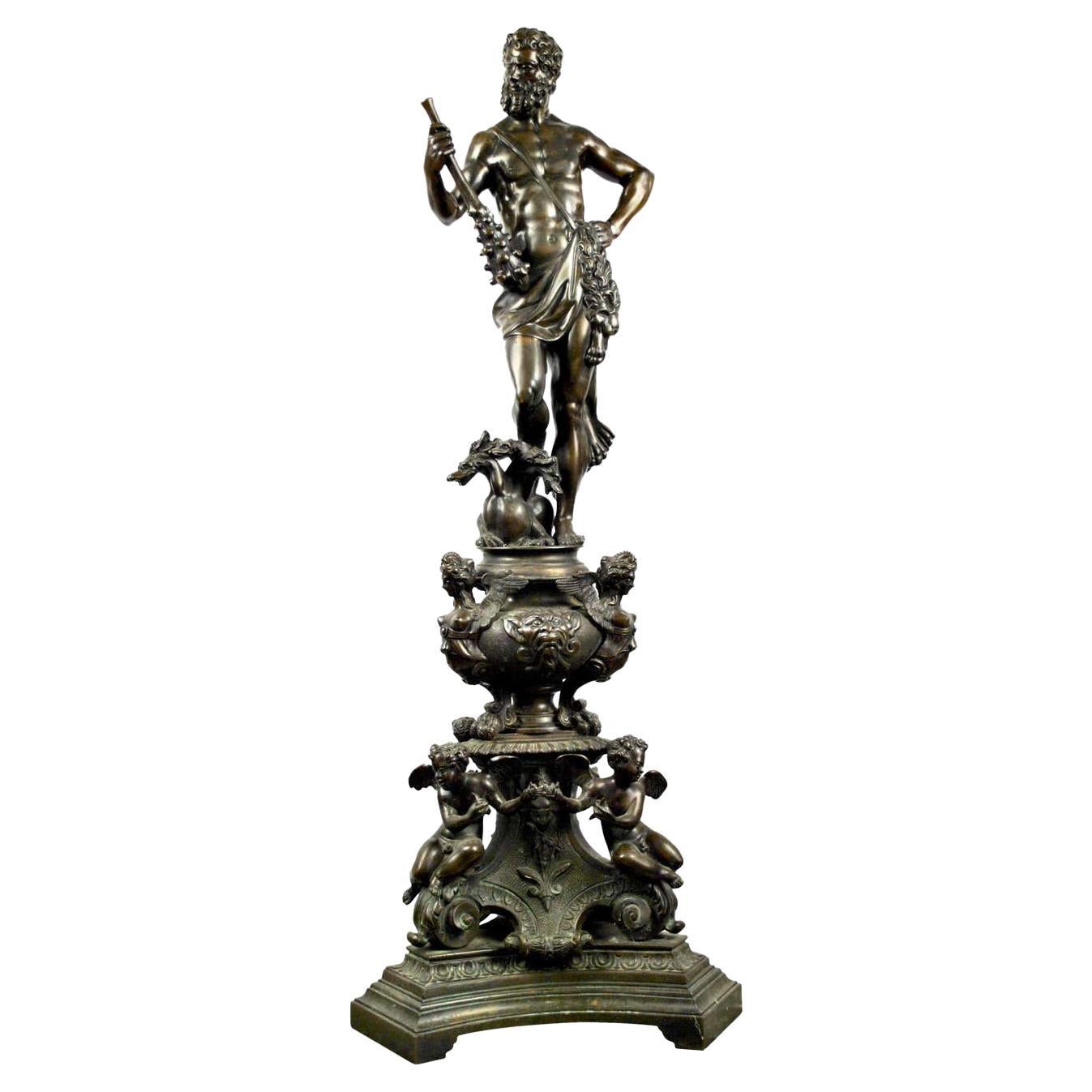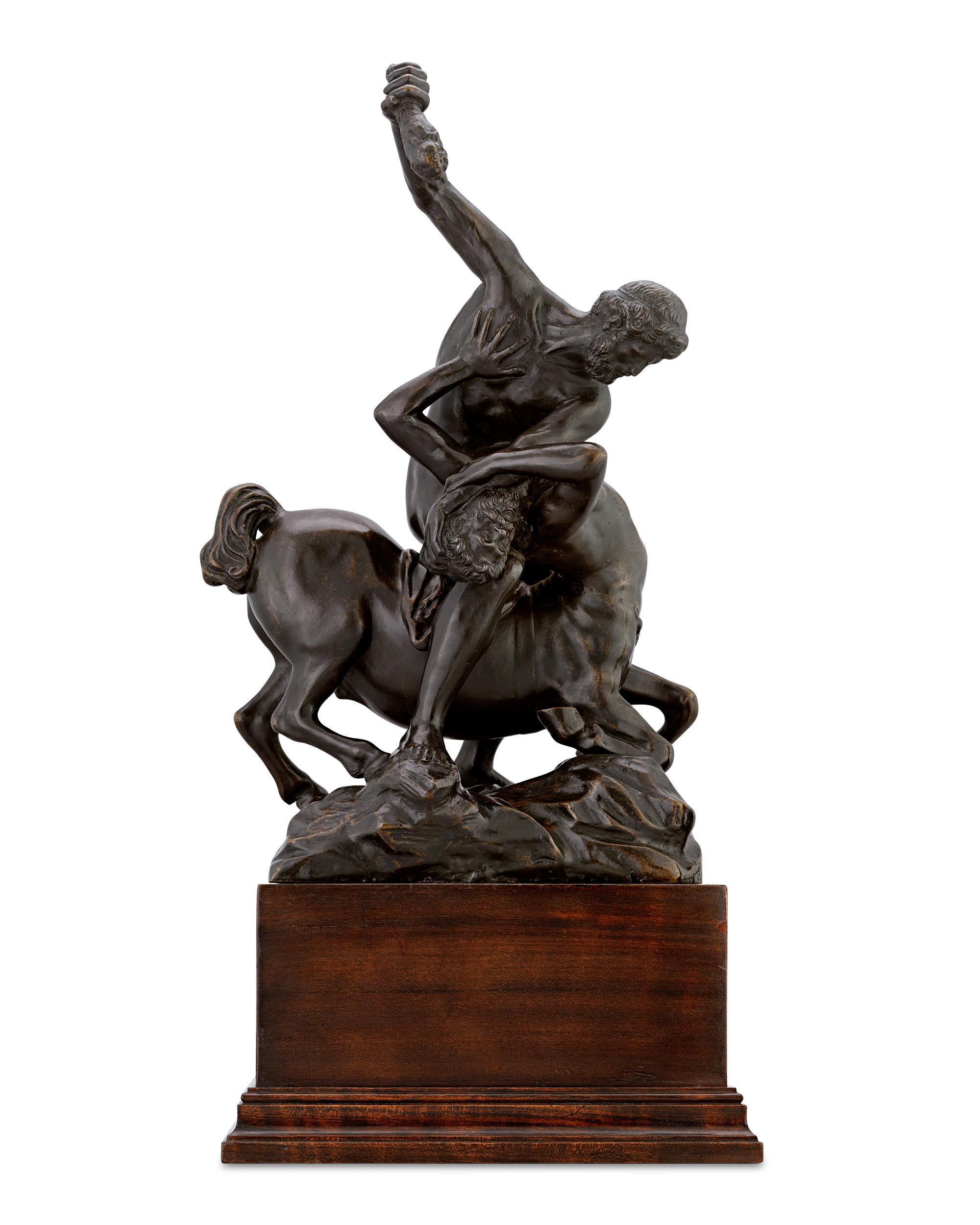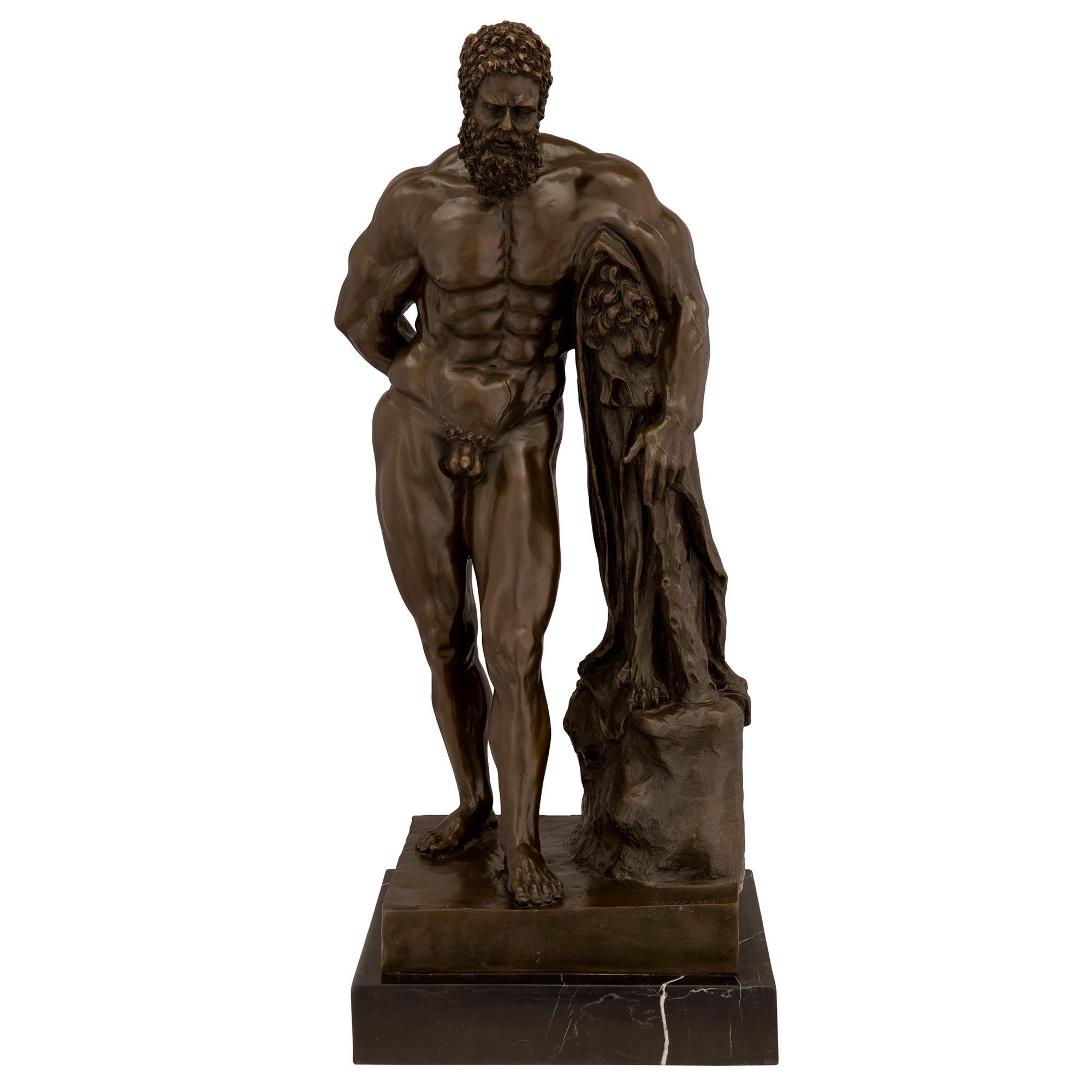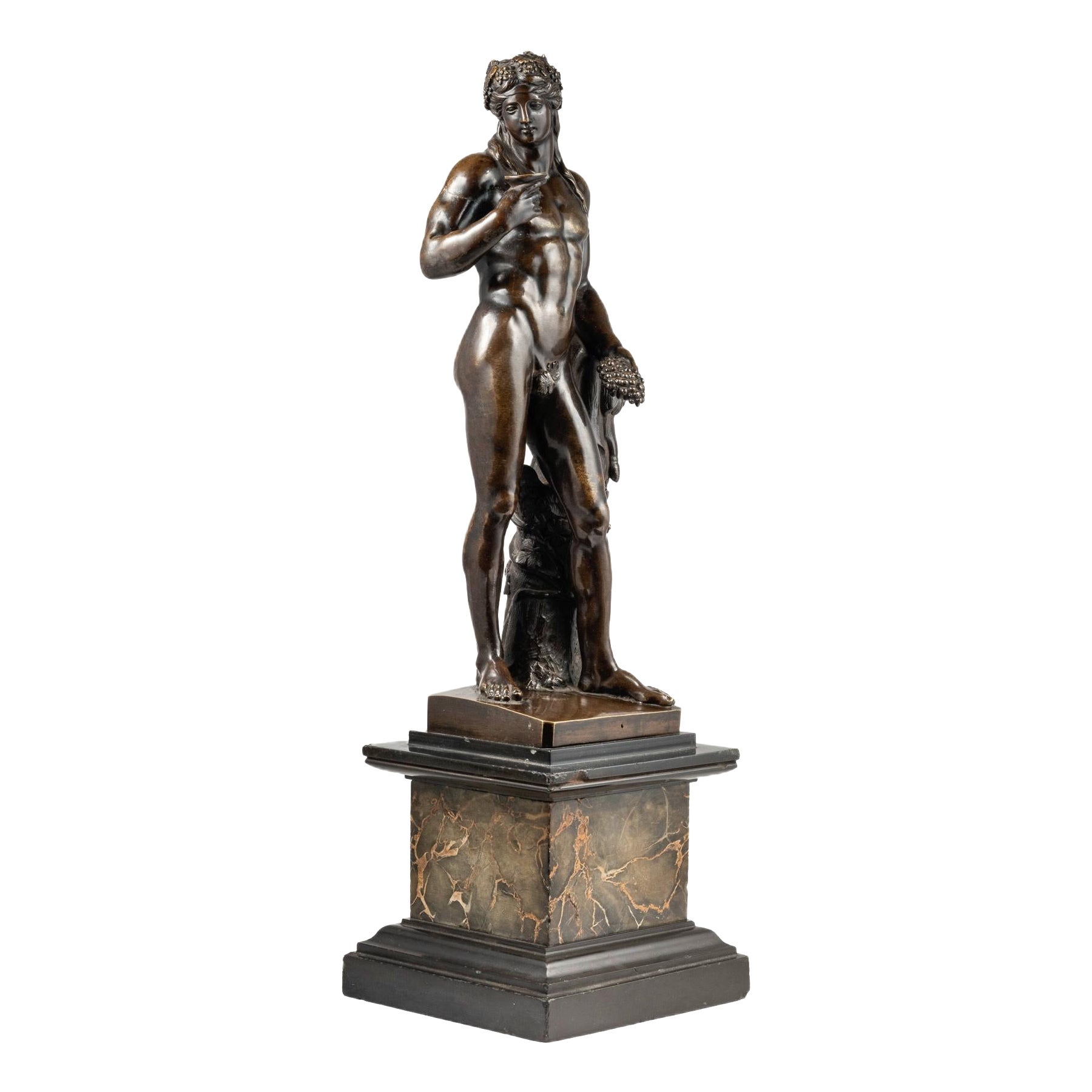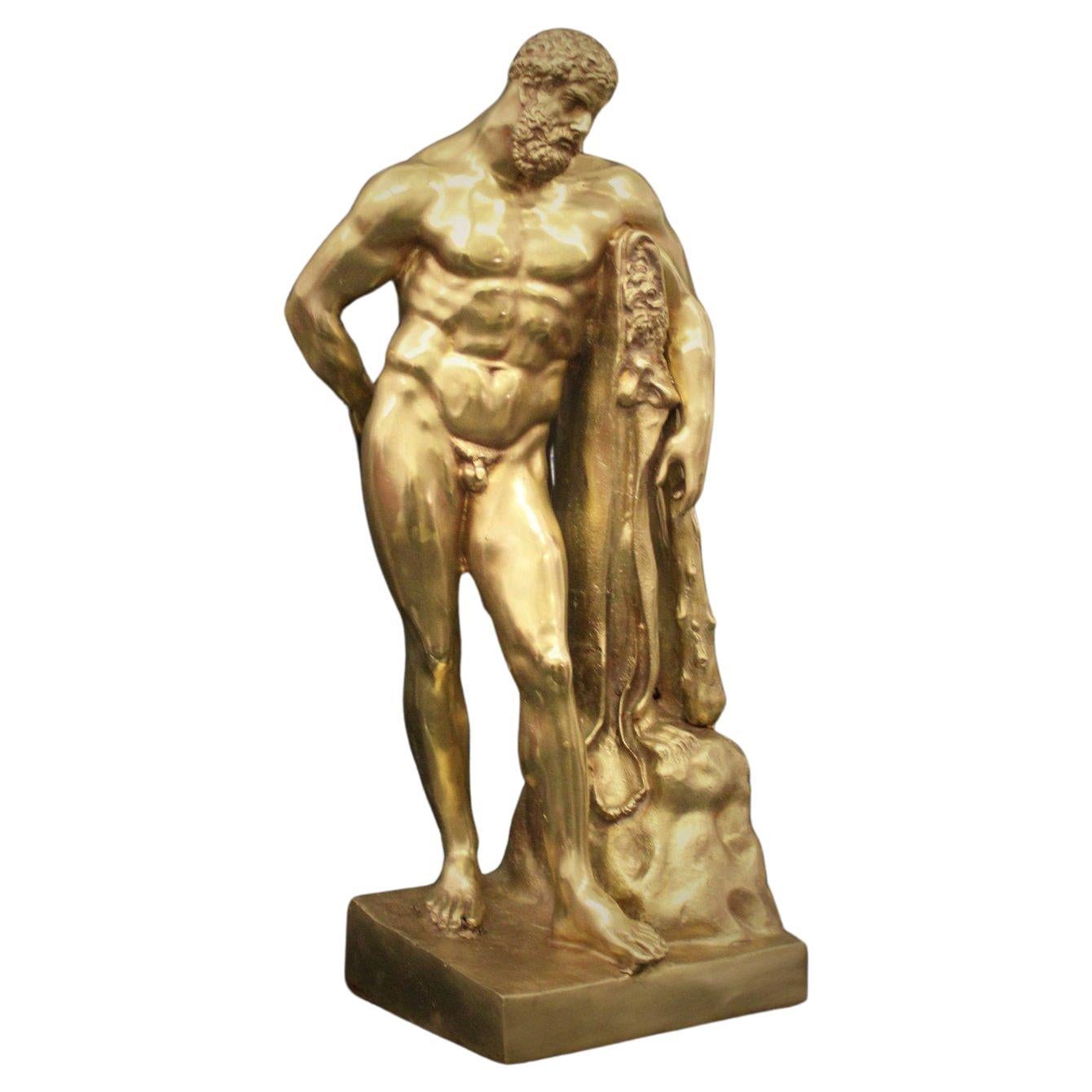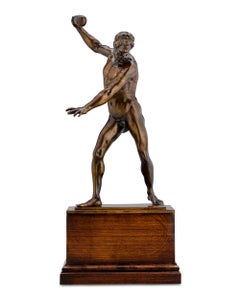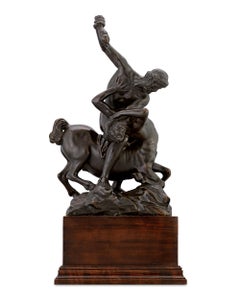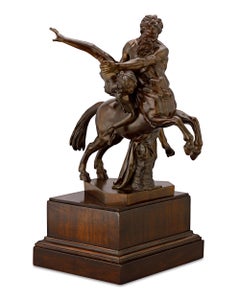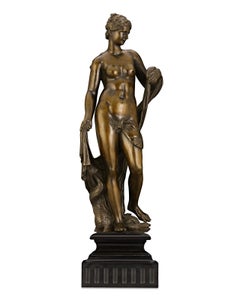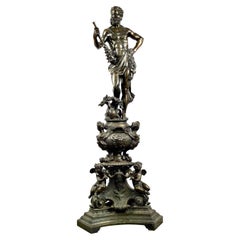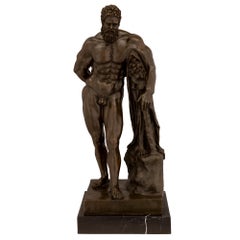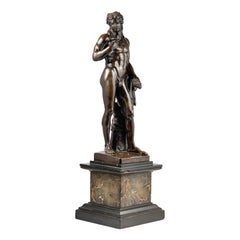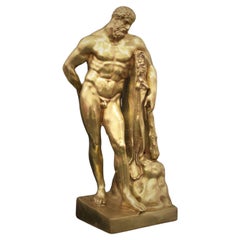Items Similar to Flemish Hercules and the Lernaean Hydra Bronze
Want more images or videos?
Request additional images or videos from the seller
1 of 8
UnknownFlemish Hercules and the Lernaean Hydra BronzeEarly 17th Century
Early 17th Century
$98,500
£75,673.90
€86,948.45
CA$138,552.45
A$155,657.47
CHF 81,331.27
MX$1,899,872.23
NOK 1,032,669.54
SEK 972,040.82
DKK 648,841.69
About the Item
This remarkable early 17th-century Flemish bronze of Hercules and the Lernaean Hydra exudes classic Baroque grandeur and beauty. Flanders was one of the richest artistic and cultural epicenters in Europe during this period, which saw some of the finest creations in terms of artistic quality. Emotive and impactful, it is a stunning interpretation of the idealized forms so prized in the greatest pieces of classical mythology.
The large patinated sculpture portrays the aftermath of battle: the Roman mythological hero Hercules stands triumphant over the body of the Lernaean Hydra he has just slain. Unlike the action depicted by the majority of heroic artworks, the present sculpture displays Hercules in a moment of quiet pause as the ferocious, multi-headed monster lies below. This is only the second of Hercules’ twelve labors — many challenges still lie ahead of the young hero, so his rest in this rendering foreshadows the challenges to come.
The divine hero has been a favorite of artists and sculptors for centuries; legendary for his physical strength, he also came to represent a moral fortitude. The Labors of Hercules, in particular, lend the mythological figure a strength and perseverance that seemed beyond the grasp of mortals. By overcoming all odds and successfully completing these Labors, Hercules achieved immortality and, ultimately, came to embody the Greek ideal of pathos, or virtuous suffering.
Early 17th century
Bronze: 8 3/4" wide x 6 3/4" deep x 22 1/2" high
Base: 8" wide x 6 3/8" deep x 4" high
About the Seller
5.0
Vetted Professional Seller
Every seller passes strict standards for authenticity and reliability
Established in 1912
1stDibs seller since 2013
17 sales on 1stDibs
Typical response time: 10 hours
- ShippingRetrieving quote...Shipping from: New Orleans, LA
- Return Policy
Authenticity Guarantee
In the unlikely event there’s an issue with an item’s authenticity, contact us within 1 year for a full refund. DetailsMoney-Back Guarantee
If your item is not as described, is damaged in transit, or does not arrive, contact us within 7 days for a full refund. Details24-Hour Cancellation
You have a 24-hour grace period in which to reconsider your purchase, with no questions asked.Vetted Professional Sellers
Our world-class sellers must adhere to strict standards for service and quality, maintaining the integrity of our listings.Price-Match Guarantee
If you find that a seller listed the same item for a lower price elsewhere, we’ll match it.Trusted Global Delivery
Our best-in-class carrier network provides specialized shipping options worldwide, including custom delivery.More From This Seller
View AllLabors of Hercules Bronze Sculpture, 17th Century
Located in New Orleans, LA
A rare example of late Renaissance sculpture, this impressive Italian bronze captures one of the greatest divine heroes of myth and legend: Hercules. The figure is rendered with stun...
Category
17th Century Baroque Nude Sculptures
Materials
Bronze
Hercules and the Centaur Nessus Bronze
Located in New Orleans, LA
This extraordinary Italian bronze embodies all of the hallmarks of the very best Florentine sculptures of the 17th century. The work is crafted in the Mannerist style of the late Ren...
Category
17th Century Mannerist Figurative Sculptures
Materials
Bronze
Nessus and Deianira Bronze
By Giambologna
Located in New Orleans, LA
A technical and creative masterpiece of the late Renaissance era, this extraordinary bronze figure depicts the famed Greek legend of The Abduction of Deianira. Bringing together the ...
Category
17th Century Renaissance Figurative Sculptures
Materials
Bronze
Bronze of Amphitrite after Michel Anguier
Located in New Orleans, LA
After Michel Anguier
French 1612-1686
Amphitrite
Bronze
This remarkable bronze masterpiece was cast after a High Baroque masterwork by French sculptor Michel Anguier. After traini...
Category
17th Century Baroque Nude Sculptures
Materials
Bronze
Bronze of Pluto Abducting Proserpine after François Girardon
Located in New Orleans, LA
After François Girardon
1628-1715 French
Pluto Abducting Proserpine
Bronze
This High Baroque period composition captures the famed narrative of Pluto and Proserpine from Roman mythology. The late 17th-century patinated bronze, created after François Girardon's marble composition, captures the very moment that Pluto seizes Proserpine. The anguished goddess reaches skyward, attempting to escape the god’s grasp while Pluto’s stoic face betrays his knowledge that his ploy will succeed. This pivotal moment in the mythological tale has captured the imagination of many art historical greats, from Bernini to Rubens. François Girardon’s version of the climax demonstrates incredible finesse and artistry, modeled expertly in bronze in the present work by a later sculptor. The statue brings a twist of intertwined bodies into a dynamic frenzy, paralleling the tension of the legendary story.
In ancient Roman mythology, Proserpine, the beautiful daughter of Ceres — known as Persephone in Greek mythology — was picking flowers in the fields when she was suddenly abducted by Pluto, the god of the underworld, and taken to his kingdom. Consumed with grief, her mother Ceres, the goddess of agriculture, scorches the earth, stopping the growth of grain and fruit. Jupiter attempts to intervene and secure Proserpine’s return to earth, negotiating a compromise with Pluto and the Fates that allows Proserpine to be released for part of the year before returning to Pluto’s underworld. Proserpine’s journey back and forth is an allegory for the changing seasons; when Prosperine is with her mother, the earth warms and provides bountiful harvests. Upon her annual return to the underworld, however, the earth once again becomes cold and barren.
After returning to France after years of training in Rome, François Girardon quickly rose to become one of the greatest artists in France. He was elected a member of the Académie Royale de Peinture et de Sculpture in 1657 and would become Chancellor of the Royal Academy in 1695. The artist was approached frequently for royal commissions and Girardon’s Pluto was originally commissioned by Louis XIV for the gardens at his Palace of Versailles. It was one of four monumental marble groups intended to decorate the corners of Charles Le Brun’s never completed garden at the chateau, the Parterre d’Eau. Each group of three figures symbolized one of the four elements: earth, air, fire and water. Pluto’s association with hell made him the apt...
Category
Early 18th Century Baroque Figurative Sculptures
Materials
Bronze
Perseus
Located in New Orleans, LA
The legendary Greek god Perseus is the subject of this elegant half-bust by Ubaldo Gandolfi, a major painter and sculptor from Bologna. The son of Zeus and Danaë, Perseus was the le...
Category
Mid-18th Century Other Art Style Figurative Sculptures
Materials
Terracotta
You May Also Like
Hercules Bronze
Located in Southall, GB
A French bronze of Hercules. This wonderful piece depicts the great battle of the Lernaean Hydra monster, the multi-headed beast. As one head was severed by Hercules, two more took i...
Category
Antique Mid-19th Century Figurative Sculptures
Materials
Bronze
$24,376 Sale Price
20% Off
Patinated Bronze Statue of Hercules
Located in West Palm Beach, FL
An impressive patinated bronze statue of Hercules. The statue is raised by a square Black Antique marble base. Above is the handsome patinated bronz...
Category
Antique 19th Century Unknown Figurative Sculptures
Materials
Bronze
18/19th C. Italian Neoclassical Patinated Bronze Sculpture of Bacchus
Located in New York, NY
A Rare and Exquisite Late 18th to Early 19th Century Italian Neoclassical Patinated Bronze Sculpture of Bacchus, God of Wine, Fertility, and Revelry.
This superbly cast and finely m...
Category
Antique 1790s Italian Neoclassical Figurative Sculptures
Materials
Marble, Bronze
Hercules In Gilded Bronze
Located in Rome, IT
Description:
Hercules in gilded bronze.
ADDITIONAL PHOTOS, INFORMATION OF THE LOT AND SHIPPING INFORMATION CAN BE REQUEST BY SENDING AN EMAIL
Tags: Ercole in bronzo dorato
Period:
...
Category
20th Century Figurative Sculptures
Materials
Bronze
American School Art Deco Bronze Sculpture “Hercules & The Hydra” ca. 1940s
Located in Shippensburg, PA
ART DECO
United States, circa 1940s
Hercules and the Lernean Hydra
Patinated bronze unsigned designed as a fountain
Item # 410TUG09E
Stark, minimal and thoroughly modernist, th...
Category
20th Century American Art Deco Figurative Sculptures
Materials
Bronze
Bronze Sculpture, Ercole Farnese
Located in Rome, IT
Important bronze sculpture, Ercole Farnese, Florentine foundries, xx century.
Category
Early 20th Century Busts
Materials
Bronze
$3,771 Sale Price
20% Off
More Ways To Browse
17th Century Bronze
Bronze Display Stand
Bronze Head Classical
Antique Hercules
Bronze Head Roman
Bronze Sculpture 17th Century
Flemish Sculpture
Hercules Bronze
Ruslan Karablin
Sacred Langur
Salvador Dali Bas Relief Silver
Sergei Isupov
Sydney Kumalo
Tayeba Lipi
Trois Sardines
Verdigris Wall Sculpture
Vincent Glinsky Sculpture
Vincent Glinsky
